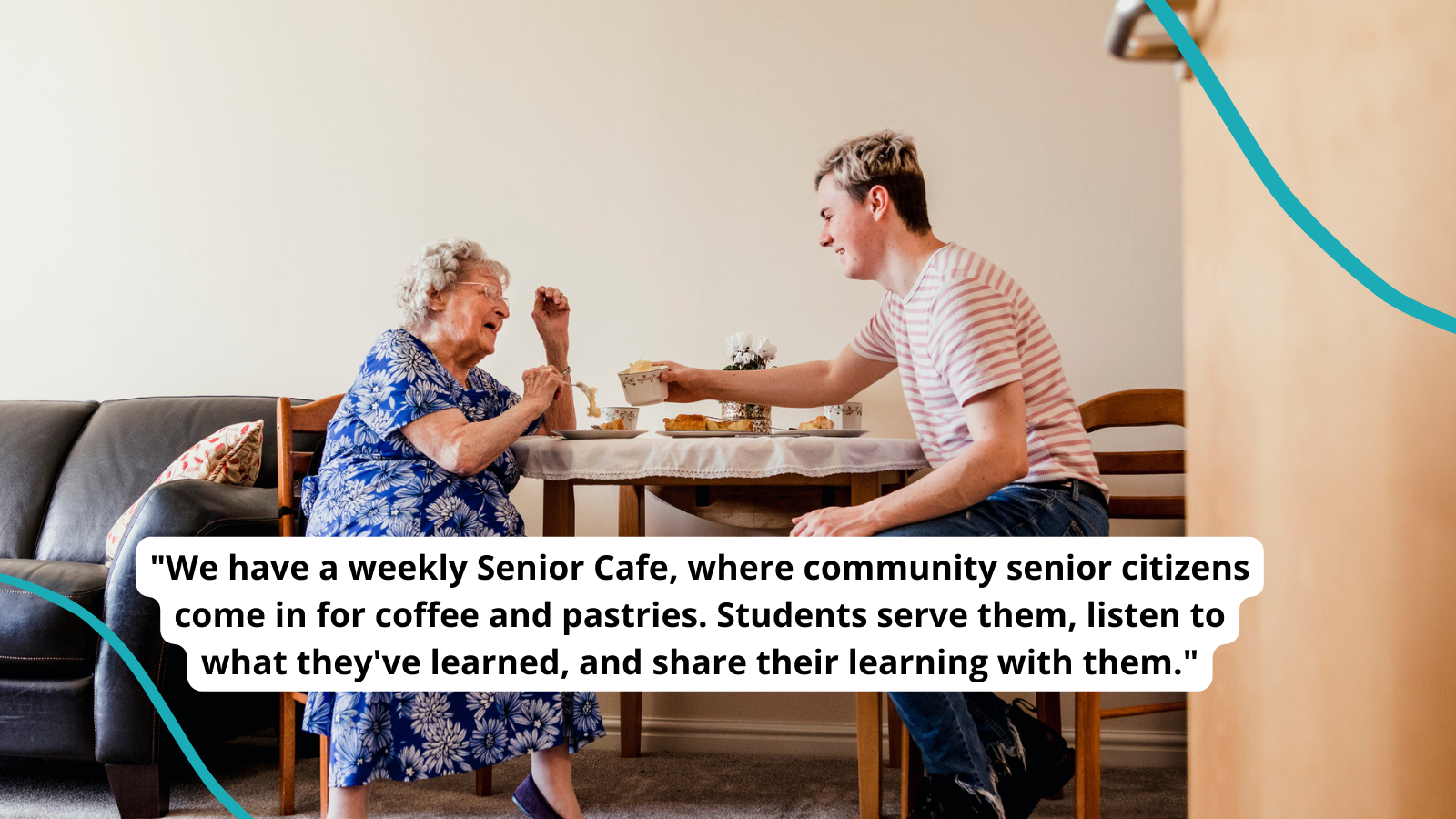Between school, music lessons, sports practice, and whatever else is packed into their schedule, students’ days are filled with opportunities for social interaction with peers, teachers, coaches … i.e., kids and working adults. Notice a demographic that’s missing?
Many students don’t regularly interact with the senior citizens in their communities. And that is a huge missed opportunity! With National Senior Citizen Day coming up on August 21, we wanted to take a closer look at the role seniors can play in K-12 education.
Mutual benefits
Laura Cartensen, director of the Stanford Center of Longevity, led the research of “Hidden in Plain Sight: How Intergenerational Relationships Can Transform Our Future.” In an interview with Stanford News, Cartensen shared, “there is growing reason to think that older people may be just the resource children need.” Let’s take a closer look at why these relationships can be so beneficial.
Cartensen’s research found that as brains mature, they develop more sophisticated and skillful ways of solving problems. While this isn’t exactly news for teachers, it has powerful implications for intergenerational mentorship. And seniors, with their mature brains and free time, are uniquely positioned to provide a new perspective for students. Working adults often feel pulled in every direction by different obligations. By contrast, retired seniors are enthusiastically seeking activity. Cartensen found seniors often “welcome meaning and productive activity and engagement.” So your students receive someone’s full attention, and seniors feel needed and important, providing emotional fulfillment for all involved!
A listening ear isn’t the only benefit seniors can offer students. Seniors can be a treasure trove of firsthand accounts of history. Hearing about the first moon landing from someone who lived through it is so much more interesting than reading about it in a textbook. Likewise, students can help seniors navigate technology and social media platforms. Together, students and seniors can provide each other with a window to the past and present.
We asked our Facebook readers how their schools collaborate with senior citizens. They shared great ideas for engaging students of all ages, from pre-K to high school. Check out their stories below.
9 Creative Ways Schools Are Partnering With Senior Citizens
Elementary schools
Crochet coach
“Not currently but when I was in 5th grade MANY years ago, a senior citizen came every Friday afternoon and she taught crochet to students that earned a free period. It was great!”
—Gwendolyn R.
Monthly meetings
“We partner with a local nursing home and visit once a month. We play bingo with the grandmas and grandpas or do a craft. The residents and students love it! For holidays we make cards for them or decorate door hangers for their rooms. The veterans are honored on Veterans Day. We also do musical programs for them. It is always a favorite day!”
—Julie O.
Pre-K partnership
“We have a pre-K class located at our local nursing home. It’s basically a lotto system to get in to it. I didn’t enroll my own kids because all of their grandparents live nearby and I wanted to give other kids that don’t have that a chance. I think the residents get to help the kids with music and arts and crafts, and there is even a small fenced-in playground for recess.”
—Danielle M.
Guest greeter
“Once a week, an older gentleman comes and reads a story to two of our classes (pre-K to 4th). Teachers sign up which day they want the reader to come and he does our morning greeting each day he comes. (He comes on Wednesday so he makes the Hump Day joke.)”
—Keri N.
Mentorship magic
“Our fifth graders do ‘Bags of Smiles’ for a local nursing home. They even were able to go visit at the end of the year. … We also have a mentor program that meets with at-risk students at lunch one day a week.”
—Angela S-R
Middle and high schools
Team Sunshine
“When I was in junior high, my school had ‘The Sunshine Club.’ Once a week we went to a local nursing home and visited the residents.”
—April F.
Musical meet-up
“In my dad’s town, the high school band and choir put on a luncheon with music once a month for senior citizens. They switch up which group performs: show choir, jazz band, string ensemble, etc. The music groups get an audience and the seniors get a nice meal and music.”
—Donna M.
Community cafe
“We have a weekly Senior Cafe, where community senior citizens come in for coffee and pastries. Students serve them and sit and talk with them, sharing their learning and also learning from them.”
—Amy D-T
Personalized poetry
“My son was in a creative writing class in high school. The students went to a local assisted-living facility, and each student interviewed a resident. Then, using their notes from their interviews, each student wrote a poem for their resident based on their life. Then they went back to the residential living facility, read their poems out loud to the group, then presented their resident with a framed copy of their poem. The poem my son wrote made ME cry; I can only imagine how meaningful it was for the woman he wrote it for!”
—Grace G-H
Does your school collaborate with senior citizens? Tell us about it in the comments!
Plus, for more articles like this, be sure to subscribe to our newsletters.

WeAreTeachers
